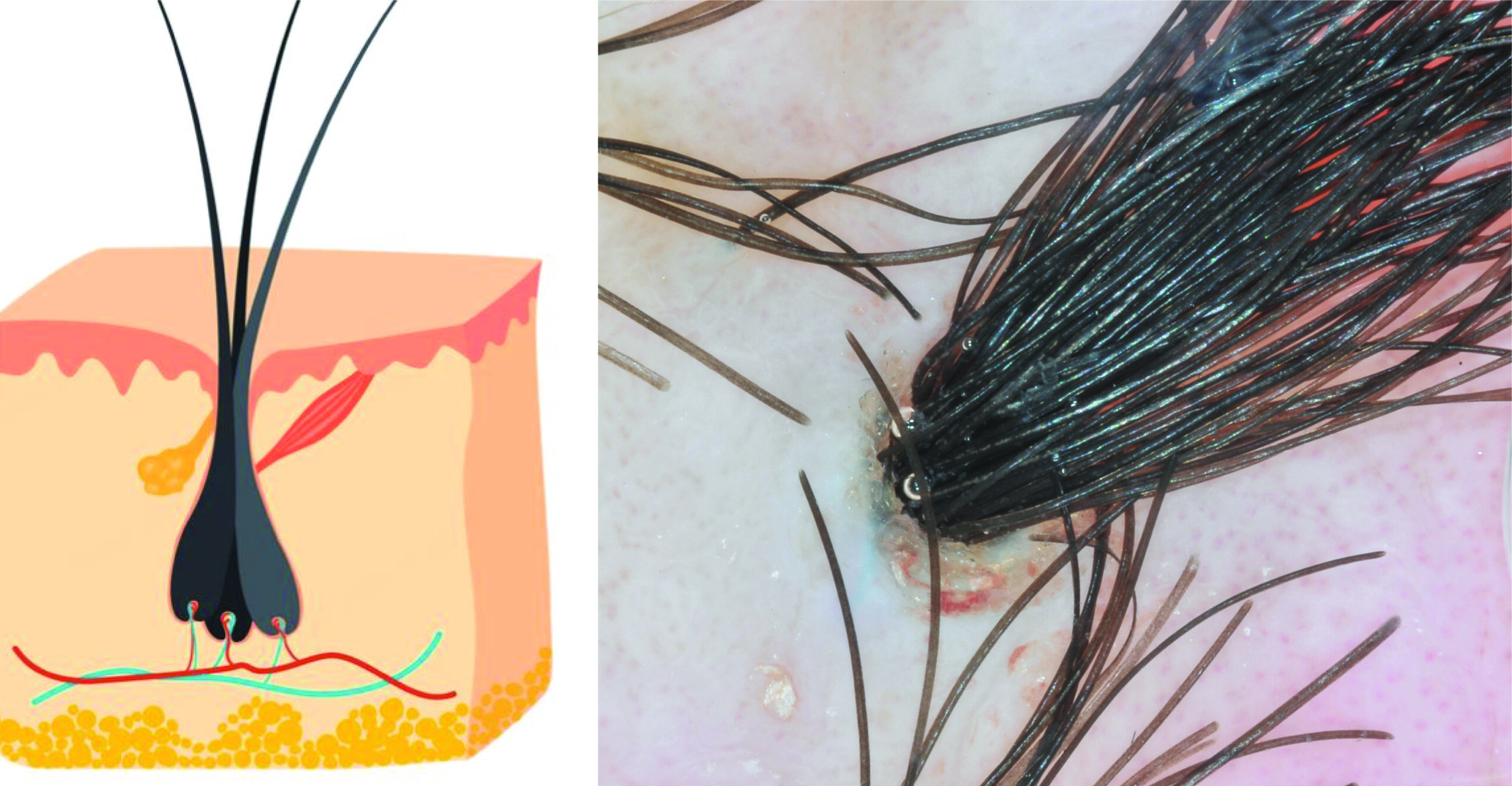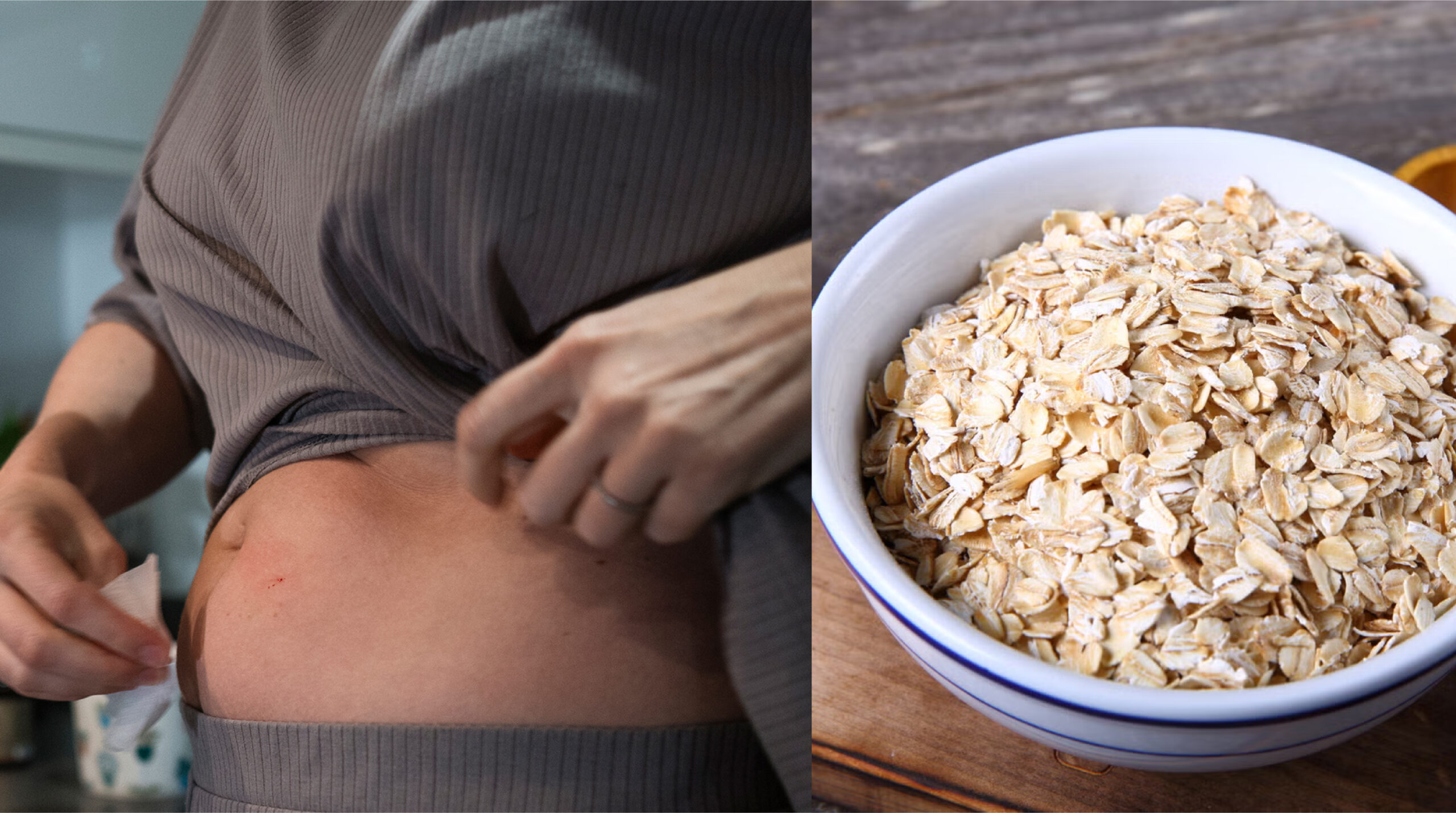What Are Hair Follicles and Their Normal Functions?
Hair follicles are tiny, tube-like structures in the skin from which hair grows. Each hair follicle typically produces a single hair strand that follows a natural growth cycle: anagen (growth), catagen (transition), and telogen (resting).
In the normal function of hair follicles, each follicle produces a single hair during the growth phase. However, when multiple hairs begin to emerge from a single follicle, it can lead to questions and concerns about whether this is normal or something more serious.
How Multiple Hairs in One Follicle Occurs
Multiple hairs in one follicle occur when more than one hair shaft emerges from the same follicle opening. This phenomenon is technically known as pili multigemini, where several hairs share the same follicle but grow from separate root systems. While it might look odd, it’s typically not a cause for alarm unless it leads to other complications such as irritation or ingrown hairs.
Causes of Multiple Hairs in One Follicle
Genetics
One of the primary factors behind multiple hairs in one follicle is genetics. Some individuals are simply predisposed to developing pili multigemini due to their hereditary makeup. If family members have had this condition, there’s a higher likelihood that others in the family will experience it too.
Hormonal Imbalances
Hormonal fluctuations can also trigger abnormal hair growth patterns, including multiple hairs growing from a single follicle. Hormonal changes during puberty, pregnancy, or due to certain conditions like polycystic ovary syndrome (PCOS) can contribute to this issue.
Skin Conditions
Certain skin conditions like folliculitis (inflammation of the hair follicles) can cause abnormal hair growth patterns. Folliculitis can damage the follicles, leading to a higher chance of multiple hairs growing from one follicle.
Hair Removal Methods
Frequent hair removal methods, particularly shaving, can sometimes irritate the hair follicles and cause multiple hairs to grow from one follicle. Over time, aggressive hair removal techniques may cause trauma to the follicle, encouraging abnormal regrowth patterns.
Symptoms and Diagnosis
Visible Clusters of Hairs
The most obvious symptom of multiple hairs in one follicle is the appearance of two or more hairs emerging from the same spot. This is typically noticed in areas where hair is denser, such as the beard area in men, or legs and arms in both men and women.
Skin Irritation and Ingrown Hairs
Multiple hairs in one follicle may lead to skin irritation, particularly if the hairs become ingrown. When too many hairs grow from a single follicle, it increases the risk of the hair curling back into the skin, which can result in redness, bumps, and discomfort.
Seeking a Diagnosis
If you notice multiple hairs growing from a single follicle, and it is causing irritation or concern, visiting a dermatologist is a good step. A specialist can examine the affected area and determine if it is simply a benign case of pili multigemini or if further tests are required to rule out any underlying conditions.
Is It Normal to Have Multiple Hairs in One Follicle?
Commonality of Pili Multigemini
Pili multigemini is relatively uncommon, but it is not considered a dangerous condition. For most people who experience this, it doesn’t lead to significant health problems or complications. While multiple hairs in one follicle can be a bit unsettling, it’s typically considered more of a cosmetic issue than a medical one.
Potential Complications
While the condition itself may be harmless, it can sometimes contribute to ingrown hairs, which can be painful and cause infections if left untreated. Individuals who frequently shave or use other forms of hair removal might be more prone to developing irritations as a result of the thicker cluster of hairs.
Treatment Options for Multiple Hairs in One Follicle
Tweezing and Hair Removal
One of the simplest ways to manage multiple hairs in one follicle is through tweezing. Manually removing the extra hairs can help make the area look smoother and less cluttered with excess hair. However, this may not provide a long-term solution, as hair will eventually grow back.
Laser Hair Removal
For a more permanent solution, laser hair removal is often recommended. This treatment involves targeting hair follicles with concentrated light to destroy them and prevent regrowth. Laser hair removal can be highly effective for individuals with multiple hairs in one follicle, especially for those dealing with ingrown hairs or frequent irritation.
Exfoliation and Proper Skincare
Regular exfoliation can help prevent ingrown hairs, especially for those who have multiple hairs in one follicle. Exfoliating the skin helps to remove dead skin cells and unclog pores, which can encourage healthy hair growth and reduce irritation.
How to Prevent Multiple Hairs in One Follicle
Avoid Aggressive Hair Removal Techniques
Shaving or waxing too frequently and harshly can irritate the follicles, which may lead to abnormal hair growth patterns. Being gentle during hair removal and using techniques like shaving with the grain can help to minimize the chances of developing multiple hairs in one follicle.
Keep Skin Clean and Hydrated
Maintaining healthy skin through regular cleansing and moisturizing can go a long way in preventing hair follicle issues. Clean, well-moisturized skin is less likely to develop folliculitis or other conditions that may encourage abnormal hair growth.
Consider Consulting a Dermatologist
If you notice a persistent issue with multiple hairs in one follicle, especially if it’s causing discomfort or ingrown hairs, consulting a dermatologist for advice and possible treatments is a good idea. They may recommend professional treatments like laser therapy or prescribe medications that can help manage hair growth patterns.
When Should You Be Concerned?
Signs of Infection
While pili multigemini is typically harmless, you should watch for signs of infection, especially if you regularly remove hair. Symptoms such as redness, swelling, pus, or extreme tenderness around the follicle can be signs of an infection, which may require treatment with antibiotics.
Chronic Irritation or Discomfort
If the condition is leading to chronic irritation, it might be worth seeking treatment to avoid worsening complications. Ingrown hairs that become chronic can lead to scarring or more severe infections if left untreated.
Conclusion: Managing Multiple Hairs in One Follicle
Multiple hairs in one follicle may seem unusual, but in most cases, it’s a benign condition that can be easily managed with the right care. Whether caused by genetics, hormonal changes, or other factors, pili multigemini generally doesn’t lead to serious health concerns.
If you are experiencing irritation, ingrown hairs, or just want to address the cosmetic aspect of this condition, treatments like laser hair removal, exfoliation, and proper skincare can help. For those with more persistent or troublesome cases, consulting with a dermatologist is recommended to rule out any underlying issues and receive targeted treatment options.
Read more: Kamie Crawford Husband: Exploring the Personal and Professional Life of the TV Host and Beauty Queen




